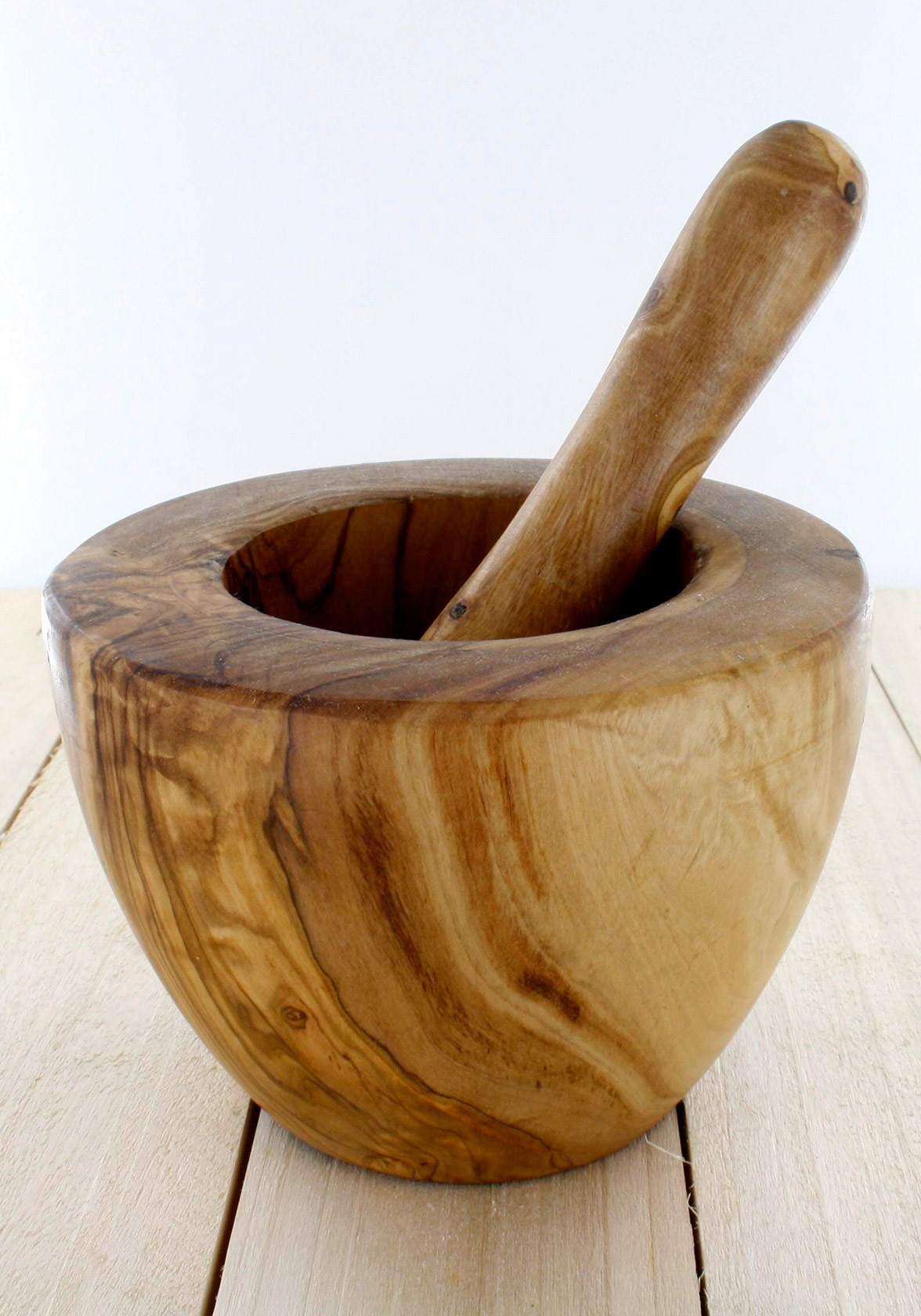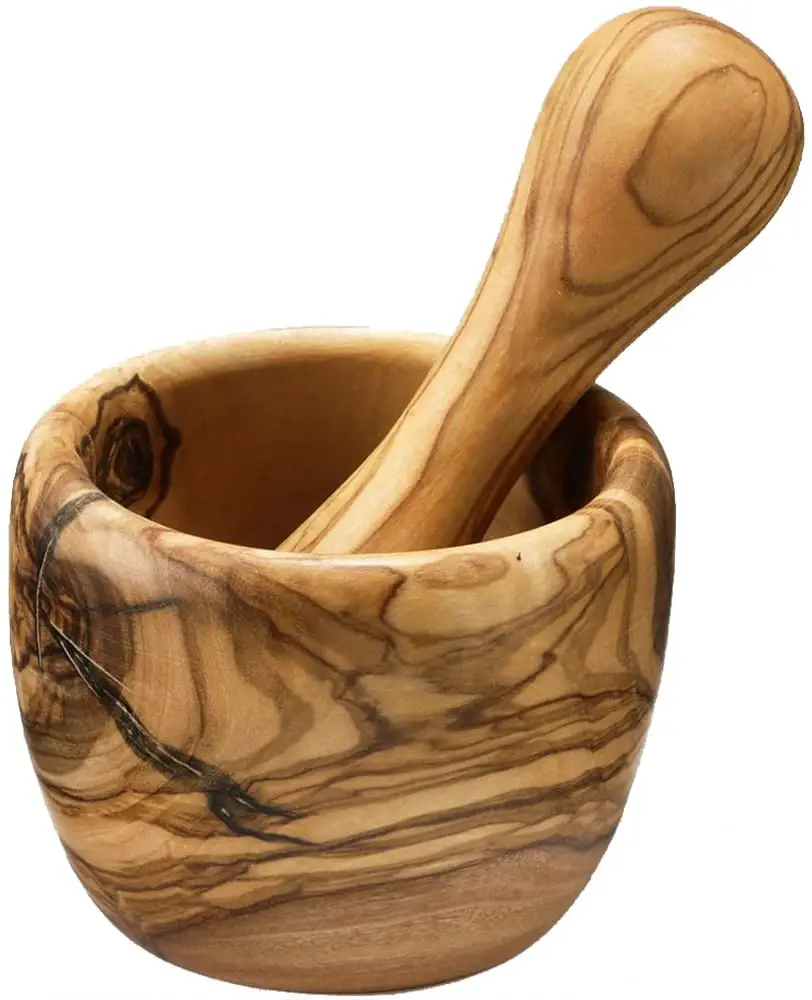Looking for how to care for your wooden mortar and pestle. All is sorted in this post as I am not only going to share this with you but also let you know that you can use this on how to cure your wooden mortar and pestle.
As a typical African man, a wooden mortar and pestle are where we usually use in our part of Africa to pound yam. I remember a wooden mortar and pestle my Mom used since I was born. This was over 30 years ago, and this wooden mortar and pestle are still being used till date.
This shows you how strong, effective and durable a wooden mortar and pestle can be is maintained properly.
Although a wooden mortar and pestle have different uses, we only concentrated on using it for pounding only yam while we got the Thai granite mortar and pestle for grinding other spices and ingredients.
Are you currently using your wooden mortar and pestle or you just bought it for the first time and you are concerned about how to take care of them?
Just continue to read. We are having the conversation here on the post.
Table of Contents
Are wooden mortar and pestles good?

Absolutely yes, wooden mortar and pestle (like this one on Amazon) are good for grinding what they are “meant” to ground.
In certain instances, wooden mortar and pestle is a great material with the appropriate density and hardness.
However, note that a wooden mortar and pestle cannot be compared to the granite mortar and pestle because of its similarity in hardness to the foods that we grind.
For you to grind a hard substance on a mortar and pestle, that mortar and pestle “MUST” be harder and stronger than the food you want to grind it for.
So, unless the food you want to grind is not equivalently as hard as the wooden mortar and pestle, then it is not advisable to use such wooden mortar and pestle.
Remember the case of diamond cutting glass?
Also, Olivewood mortar and pestle usually over time leave a flavour or smell of spice or food that is used to grind.
Therefore it is usually not advised to use it for different foods and spices.
You want to enjoy using a wooden mortar and pestle for a long time just like my mother did, then make sure it is used over and over again for the same purpose.
There you have your answer.
What is a wooden mortar and pestle used for?
Wooden mortar and pestle are usually used for crushing less harder substances that are repeatedly used, maybe every day or every week. Examples of these herbs are Lime leaves, garlic, cilantro.
In Thailand, wooden mortar and pestle are used for all sorts of spice salads like the Thai papaya Salada.
In Western Africa where I come from, we mostly pound groundnut oil seeds, yam and foofoo (cassava moulds) in the pounded yam, and this has stayed like that over the year.
As I have mentioned earlier in the article, ensure that you use the wooden mortar and pestle to pound the not-so-hard foods and spices.
If not, you won’t really enjoy using your mortar and pestle.
How to take care of wooden mortar and pestle

Generally, taking care and cleaning of your wooden mortar and pestle depends on what it is being used for.
For herbs and spices that are dry, those are the easiest. Cleaning with a dry towel will usually work for almost all the time. However, if your spices and herbs are wet, then you may need to use a hot water.
In the event that the scent does not want to leave your mortar and pestle, then you can add a little detergent or dish soap to your hot water, leave it after some time and wash the mortar and pestle afterwards.
I have earlier stated how to clean mortar and pestle in my earlier post on the blog.
Summarily, to care for your wooden mortar and pestle
- Put your wooden mortar and pestle under warm running water to allow for the removal of any form of residue.
- Use your sponge or a wet towel, with a drop or two of dish soap (like this one on Amazon) to wash the wooden mortar and pestle carefully and delicately so that all traces of food can be removed.
- Rinse and repeat if there is still residue in the wooden mortar and pestle.
- Now you can dry your wooden mortar and pestle and turn it upside down to air-dry before storing in a dry place in your kitchen.
Warning: Do not use scented detergent or soaps to clean your wooden mortar and pestle. Imagine your next preparation should taste like detergent? Haha!
For the heavier scented spices like curry, a very important caring strategy is to grind uncooked rice in your wooden mortar using the pestle so that the rice can absorb the smell of the spice. Do this repeatedly until the smell is off the wooden mortar.
The best way to make sure your wooden mortar and pestle is well cared for is
1. Just reserve your wooden mortar and pestle for grinding same-flavour spices and ingredients. That way you will not really bother about smell or scent.
That means the wooden mortar and pestle cannot be used for multi-purposely.
2. Go ahead and use it for whatever you want to grind, but always keep your dish soap and detergents close whenever you want to clean.
The most important part of taking care of your wooden mortar and pestle is to allow it to air dry. Usually, I try to turn my wooden mortar upside down to allow the water drain out then after some time, turn it back up and place it in a dry area so that it can air dry and be free of smell and scent.
A school of thought also advised that you can use tung or mineral oil on your wooden mortar and pestle. ( I have never tried this before though, but I understand it works). use it to oil your wooden mortar and pestle every day for one week and then wrap it in a cloth afterwards so as to absorb any oil that may be excess on the mortar and pestle.
Thereafter you can clean with warm water or hot cloth.
How do you care for olive wood mortar and pestle?

Olive wood mortar and pestle (like this one on Amazon) also makes for a great addition or spices and herbs. To take care of the olive wood mortar and pestle, make sure you do not allow water to stay in it for a very long time. Also, never attempt to put your olive wood in dishwater.
Always ensure that our mortar and pestle are hand-washed and rubbed with Olive oil after using the mortar and pestle.
